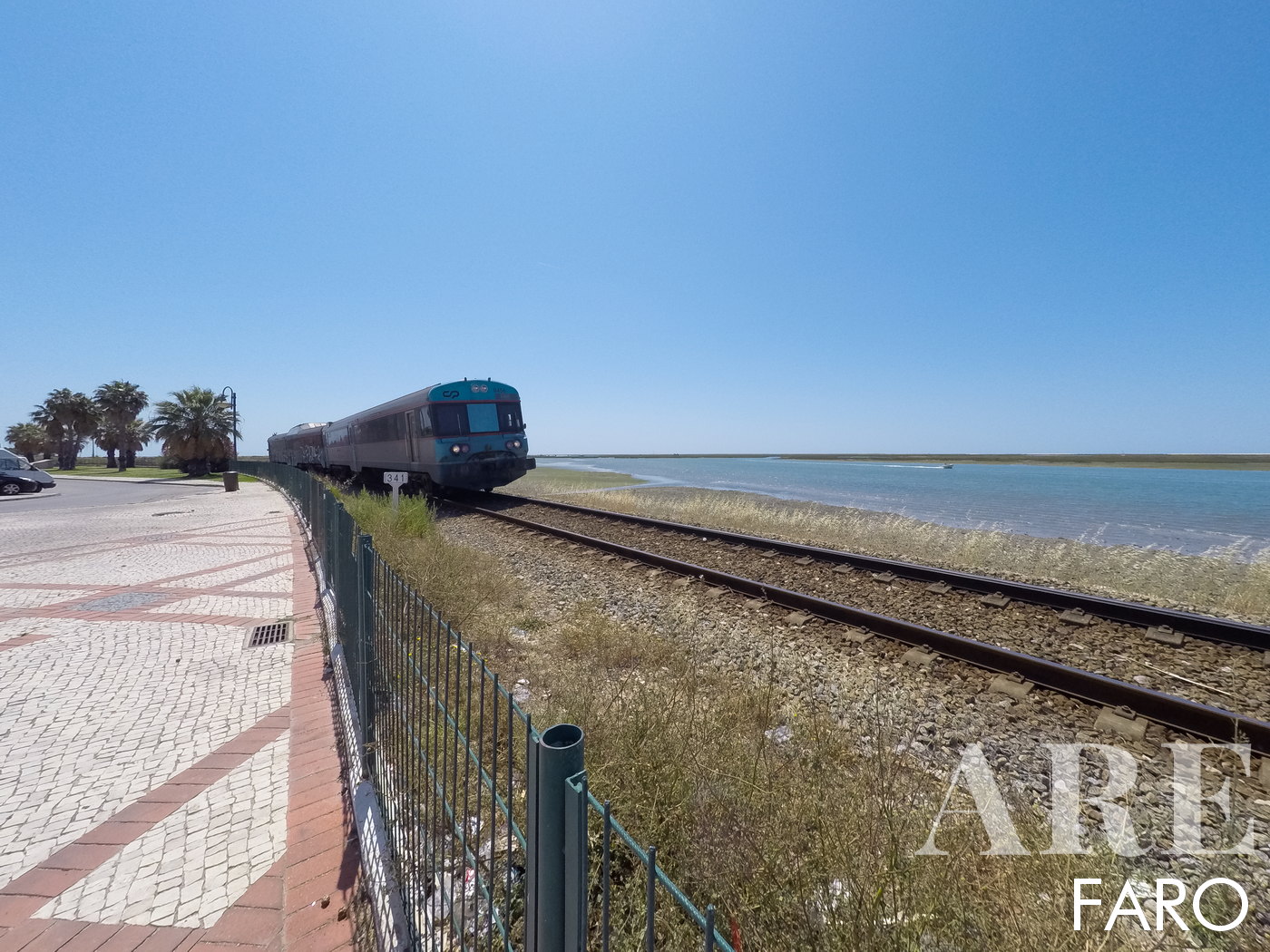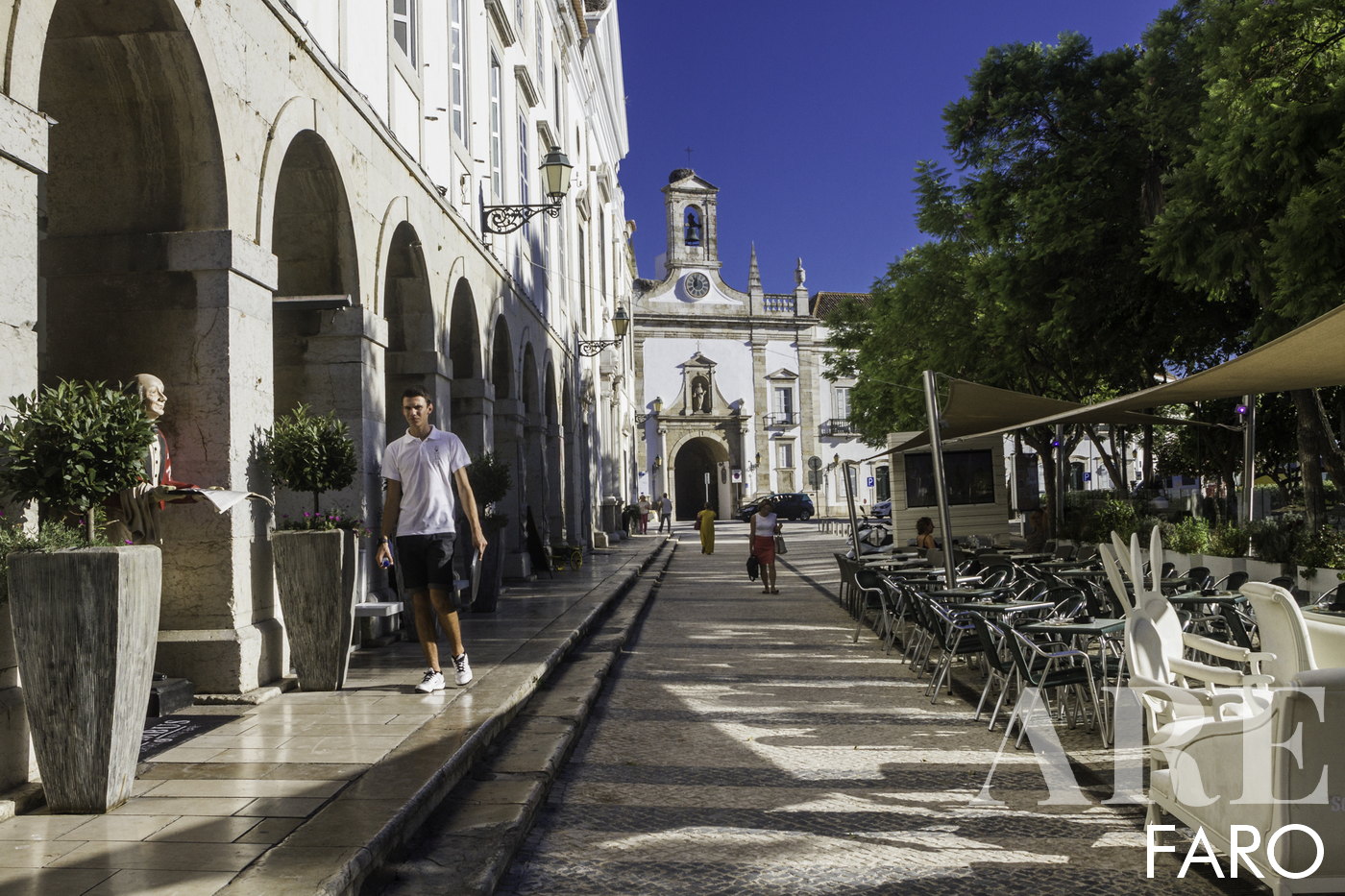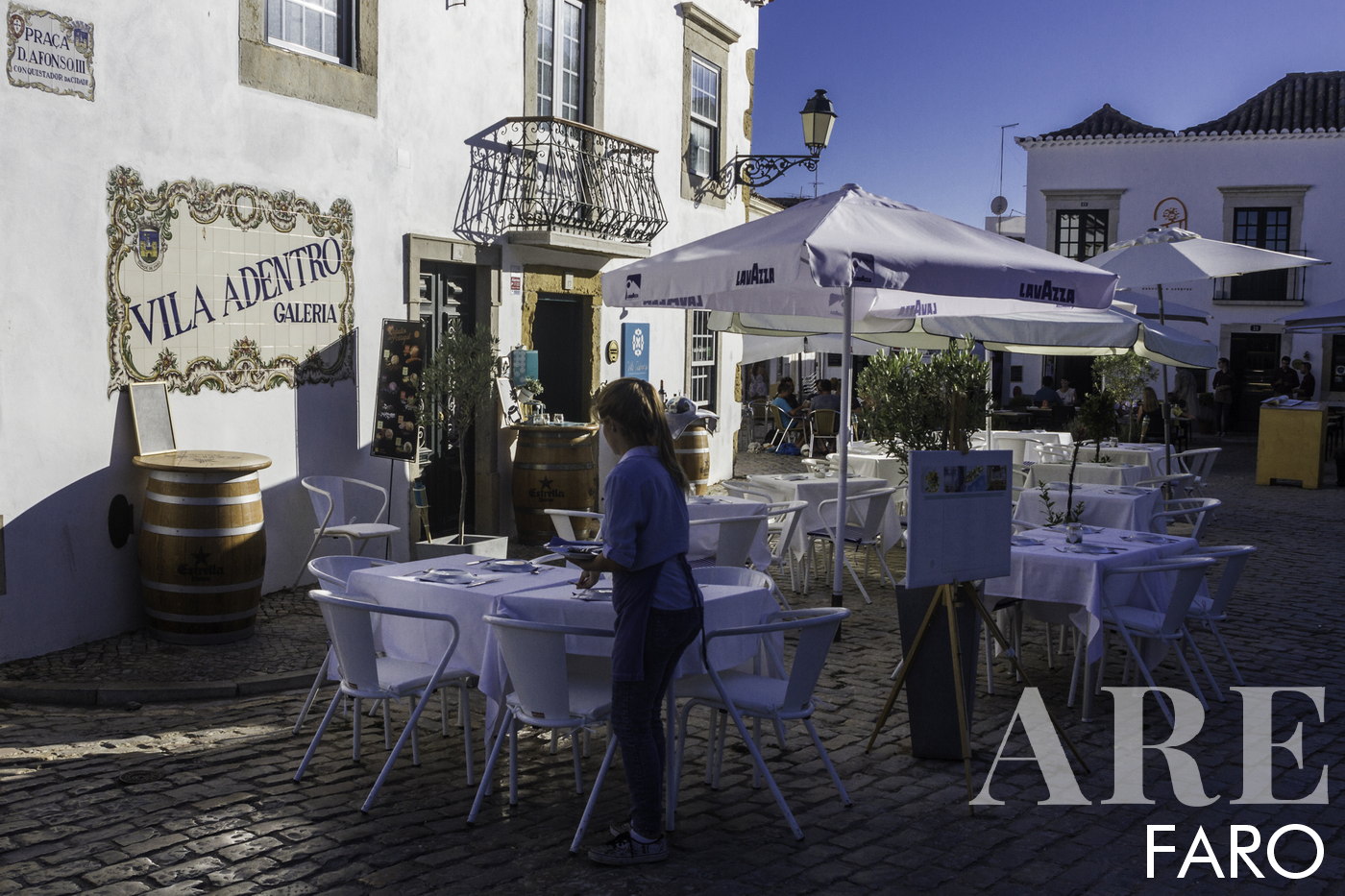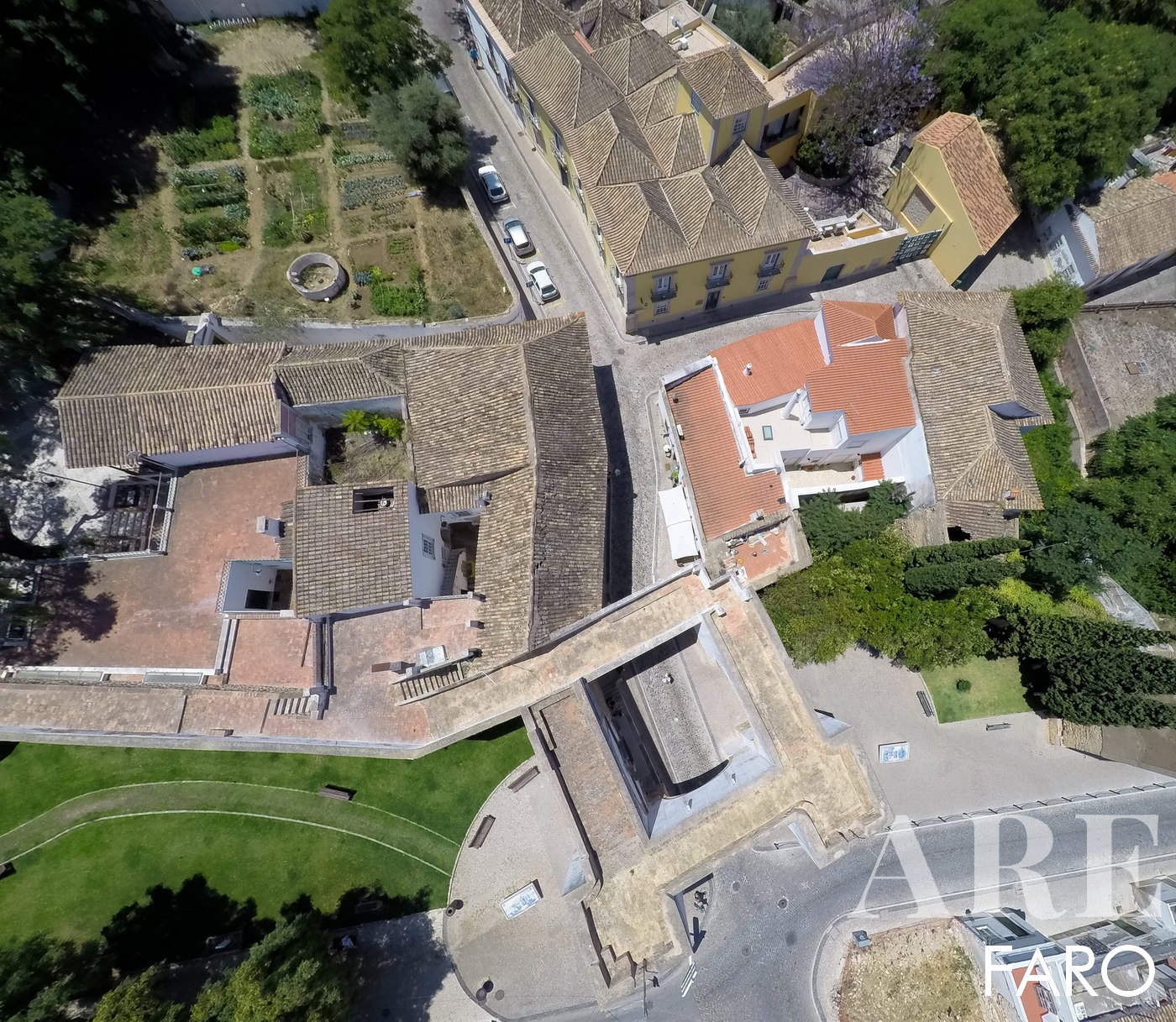
Map of the city and surroundings of Faro, with main points of interest, useful locations and residential areas. Distances to the main locations in the south of Portugal
…capital of the Algarve southern region of Portugal
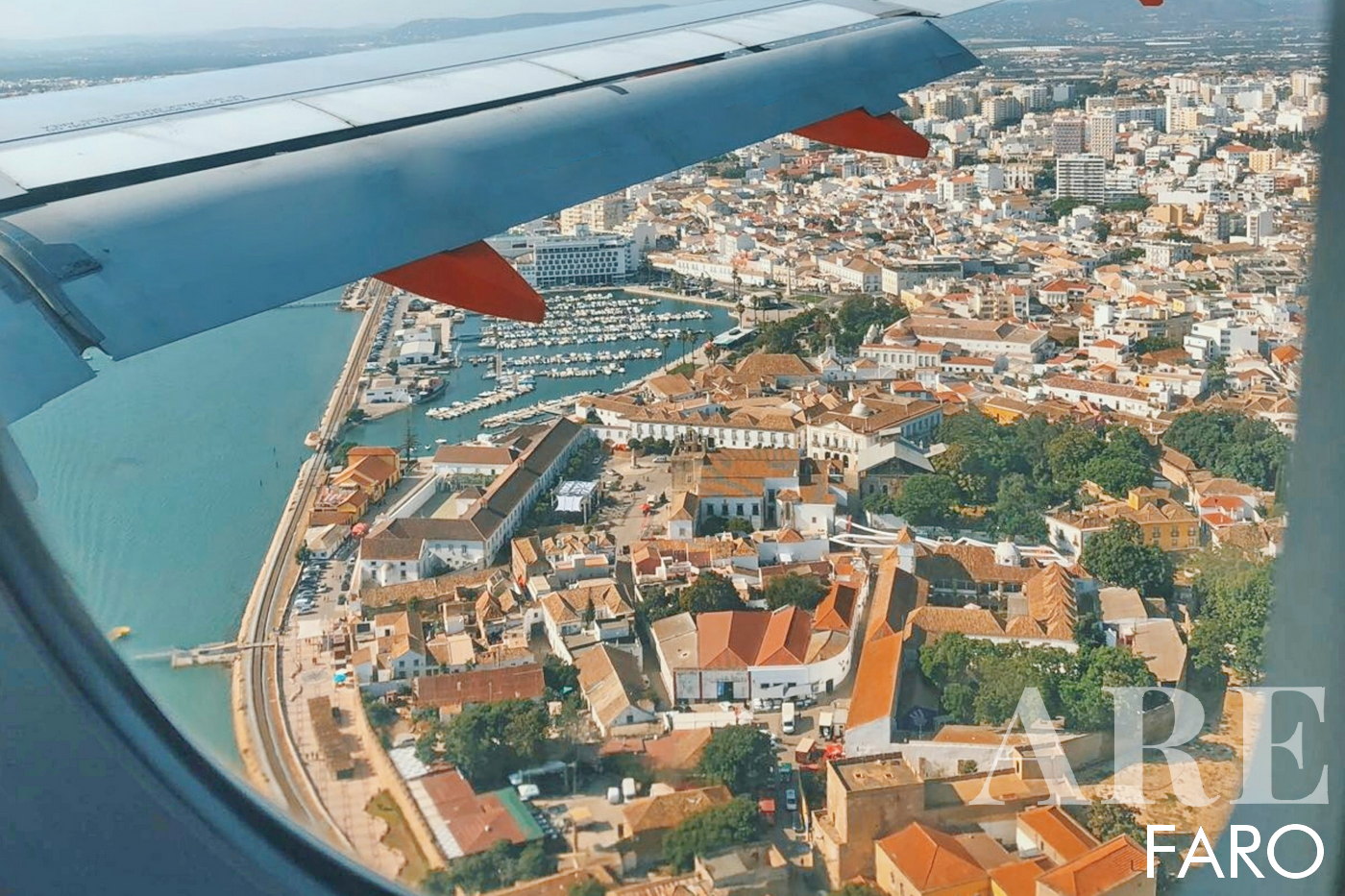
Faro is a city located in front of the Ria Formosa natural park in the southern Portugal. A historic city conquered from the Moors in 1249 by D. Dinis. A city surrounded by nature with the natural park, saltwater lagoons, nautical landscape, historical landscapes with the wall of the old city, ancient churches. Beaches accessible by boat, a glimpse of wildlife with migratory birds, a city of secular architecture, restaurant area, nightlife, 4 and 5-star hotels and a friendly environment.
Faro is the capital of the Algarve region, located in the south of Portugal, attracting international tourism and a preferred holiday destination for both national and international tourists. During the summer months, the Algarve population significantly increases to over 2 million, resulting in a growth in trade and profitability opportunities for real estate investors, who invest in properties for rent. The nightlife in the Algarve is also one of the major attractions during the hot summer months, when practically all villages, towns and cities organize events to entertain the population visiting the region. Unlike the winter months, when bars only have movement during the weekend, in summer the nightlife has a lot of offerings, with beach bars, discos, and festivals.
Travel to Faro
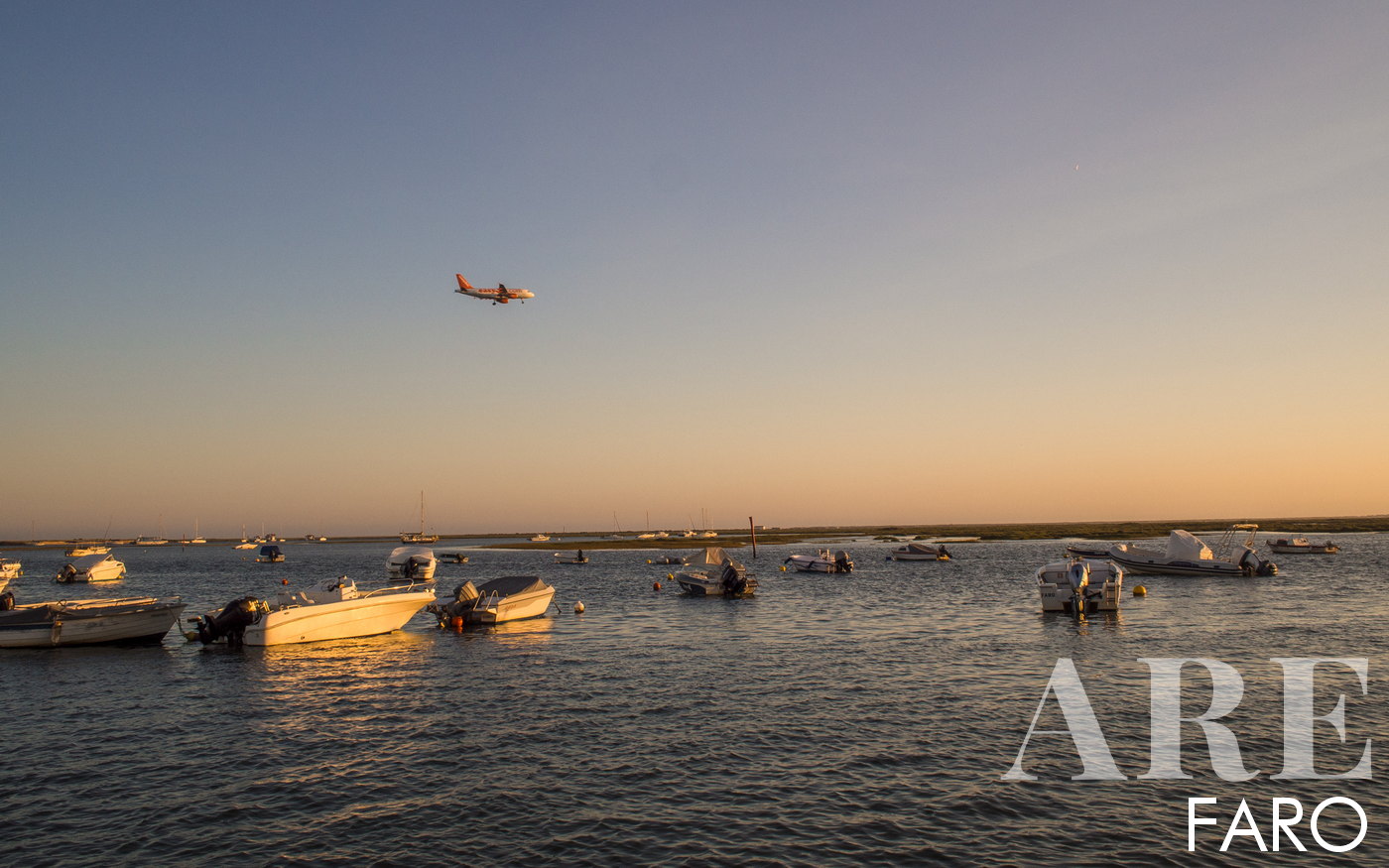
View of an airplane approaching Faro International Airport, showcasing the stunning natural beauty of Ria Formosa below
Access to Faro is easy. International flights arrive at Faro airport from most European capitals. From Faro to other cities in Portugal, there is a train station in the city center with connections to Lisbon and Porto, a bus station, with connections to all cities in Portugal and to Seville in Spain. The international airport of Faro has direct flights to the main European capitals in approximately 2 hours. Faro has highway connection to all municipalities of the Algarve, Lisbon, Porto, Evora, major cities in Portugal, and Spain, with Sevilla only 2 hours drive away.
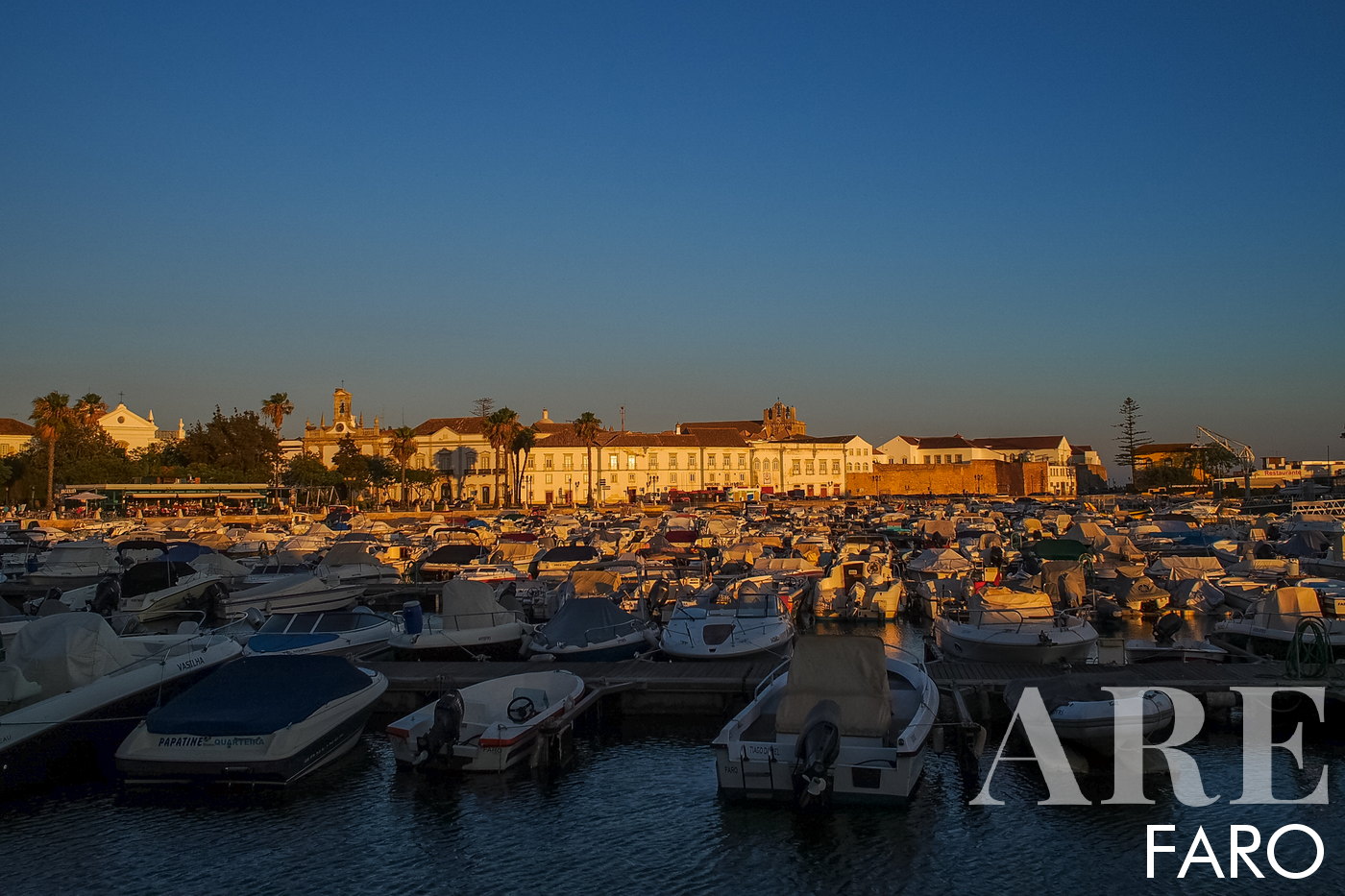
Faro Port, a quaint marina primarily designed for smaller boats
In Faro, the marina is designed for smaller vessels due to the location of a train line. The waterway’s exit passes underneath this rail line, allowing passage only during low and mid-tide conditions, limiting the size of boats that can safely navigate the area. In contrast, the marinas in Vilamoura, Portimão, and Lagos are equipped to accommodate larger vessels.
Walking in Faro
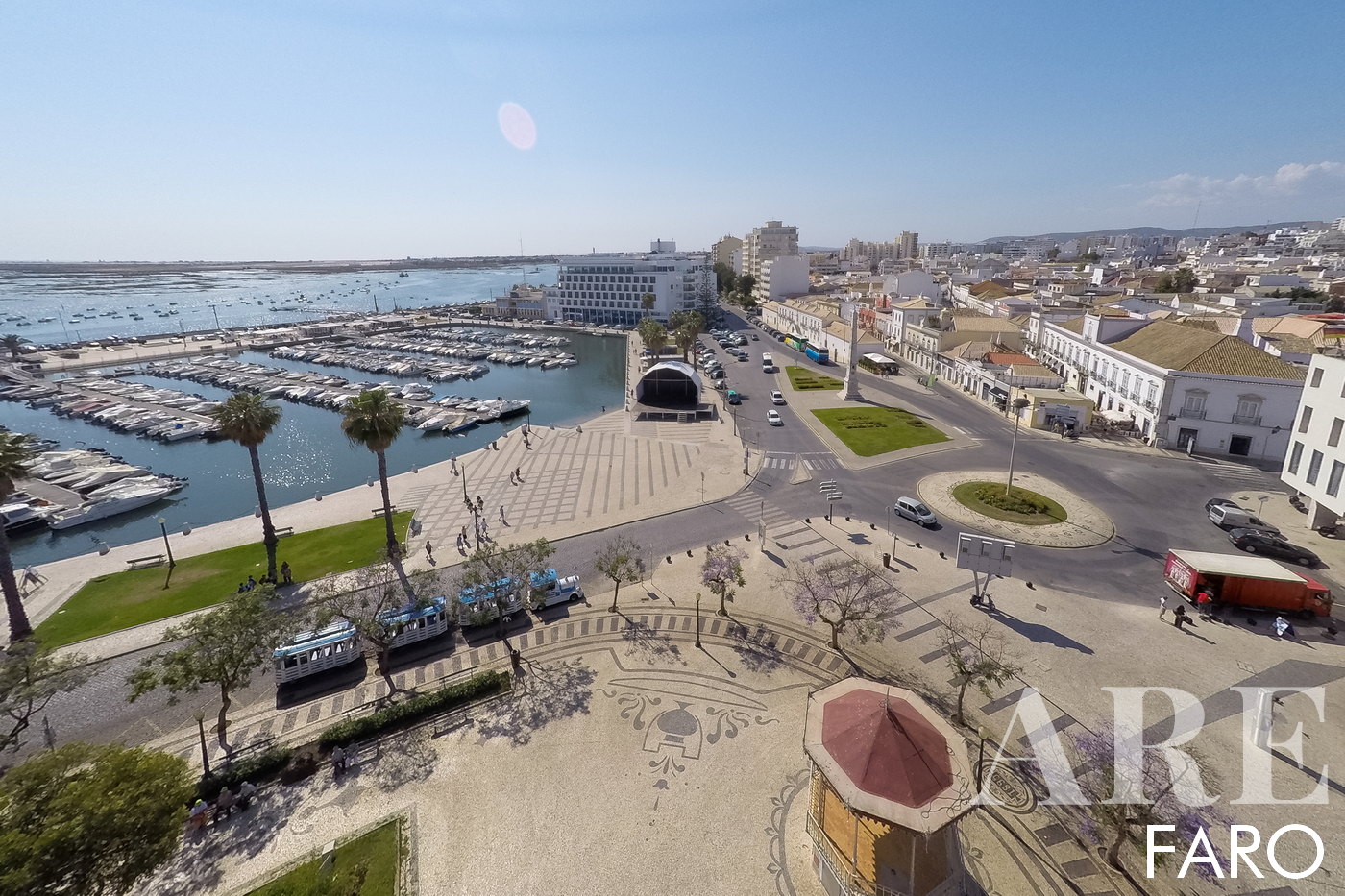
The Algarve region, home to Faro, boasts an impressive 37 golf courses, over 150km of pristine beaches, 6 well-equipped marinas including those at Vilamoura, Albufeira, Portimão, and Lagos. It also houses 3 luxury resorts: Quinta do Lago, Vale do Lobo, and Vilamoura. With an array of shopping malls, private hospitals, the esteemed University of Algarve, and international schools, this region is a vibrant mix of leisure, education, and lifestyle amenities.
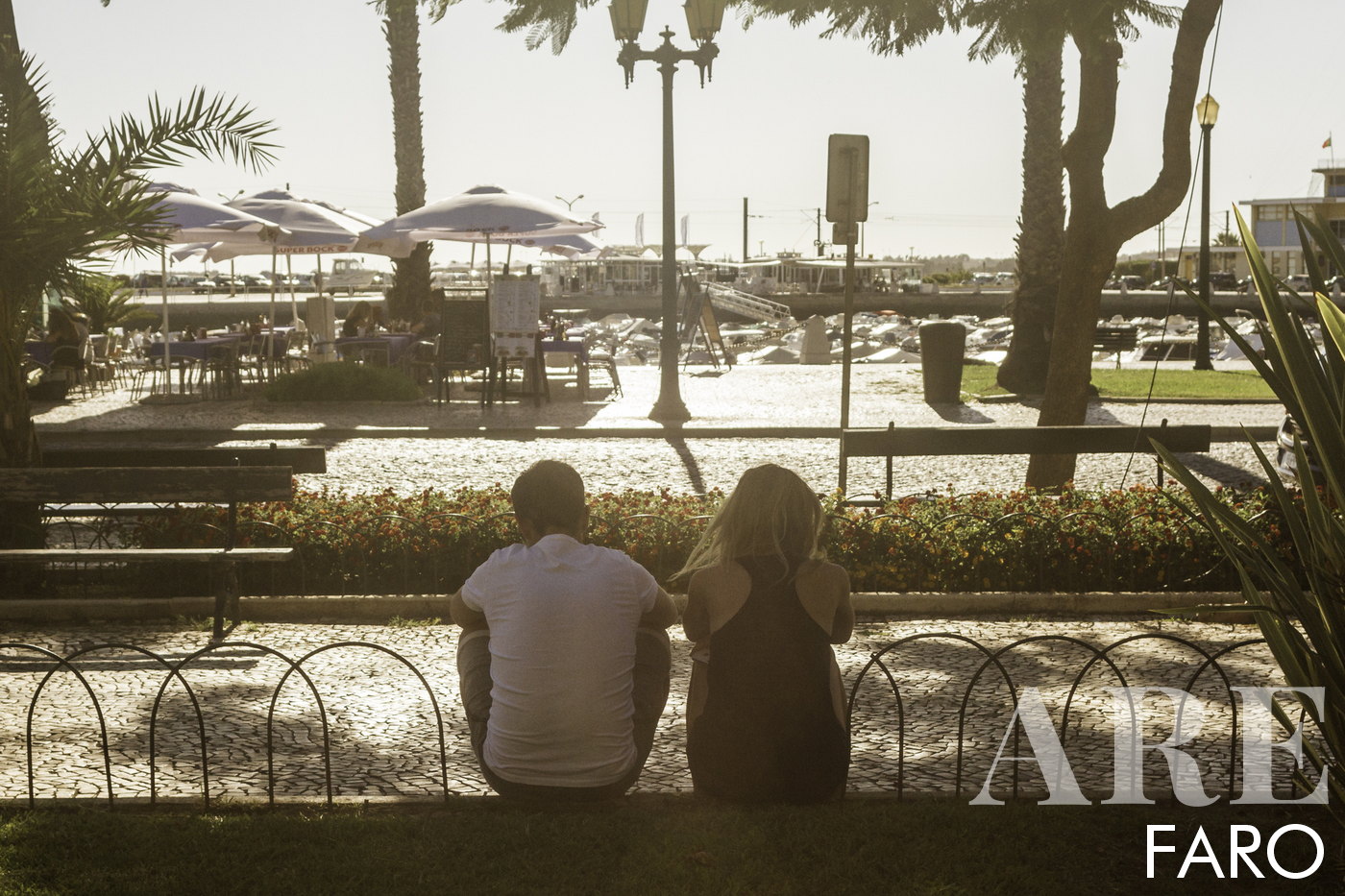
Jardim Manuel Bívar
Faro is a place to walk and enjoy, with excellent conditions for walking and cycling in the city and in nature along the coast. From the Jardim Manuel Bívar in the coastal centre of Faro, to the west, we find the Faro Ribeirinho Park, with pedestrian paths and coastal cycle paths tens of km’s long connecting to the airport 7km away, and to Faro beach, 9km away. South of Jardim Manuel Bívar, there is a boat connection to the islands of Ria Formosa.
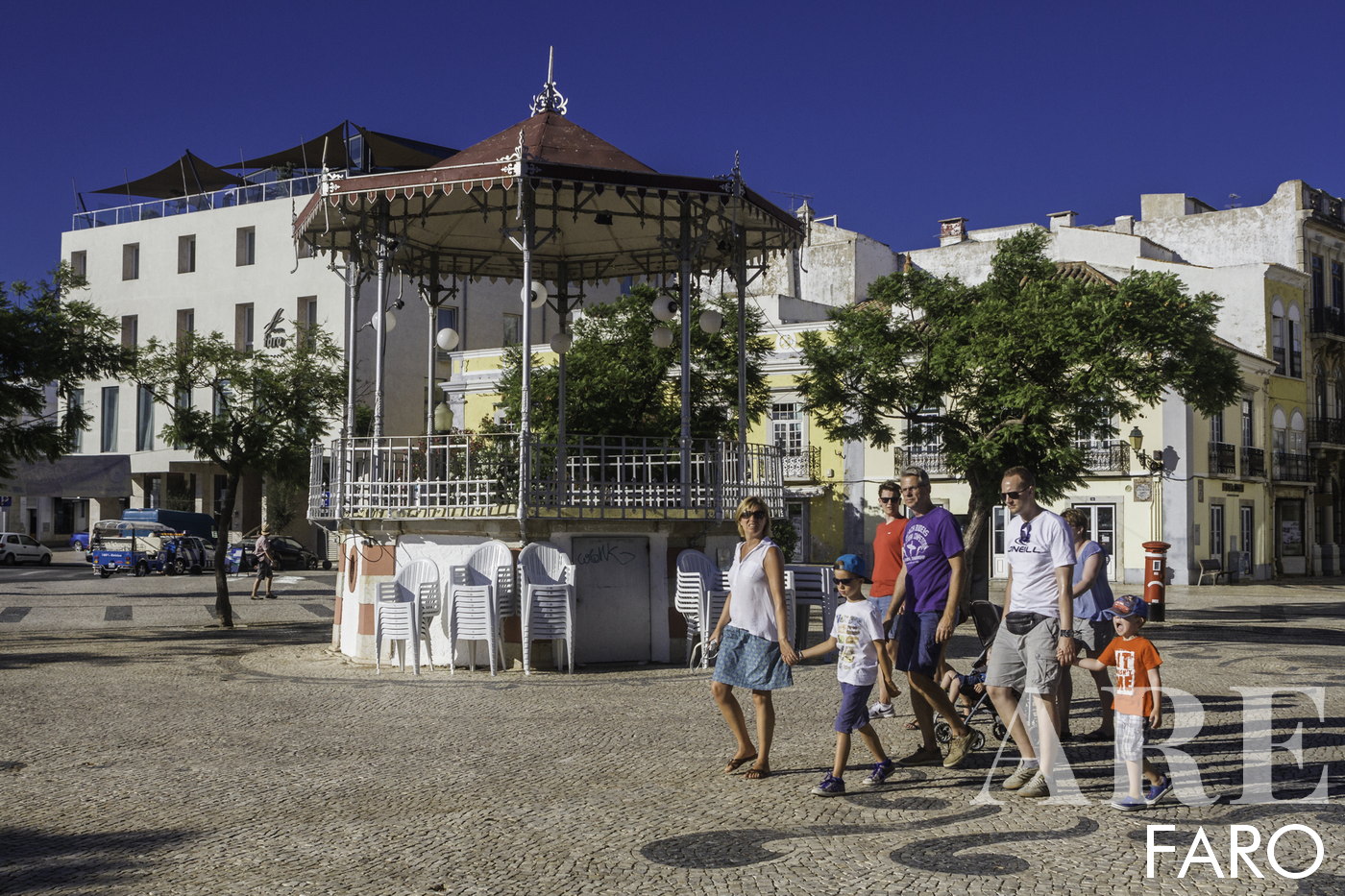
Around the city centre, Portuguese cobblestone streets lead us to Santo António street, the main shopping street in Faro, with fashion clothing stores, goldsmiths, bookstores, themed restaurants with terraces, pastry shops, service offices.
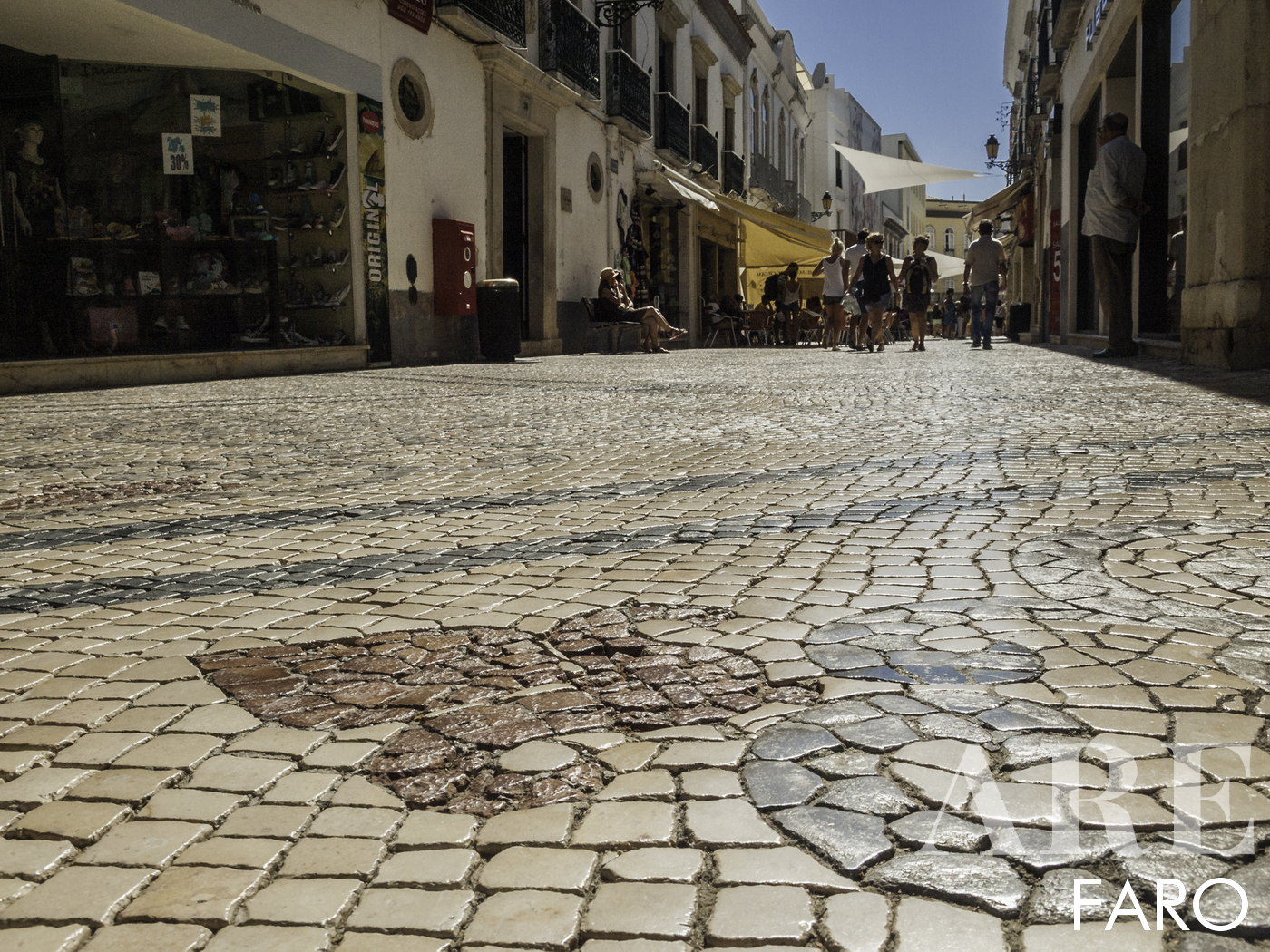
Santo António Street, Santo António Street is the main shopping street in Faro, a place for walking, shopping, and a common route for local inhabitants.
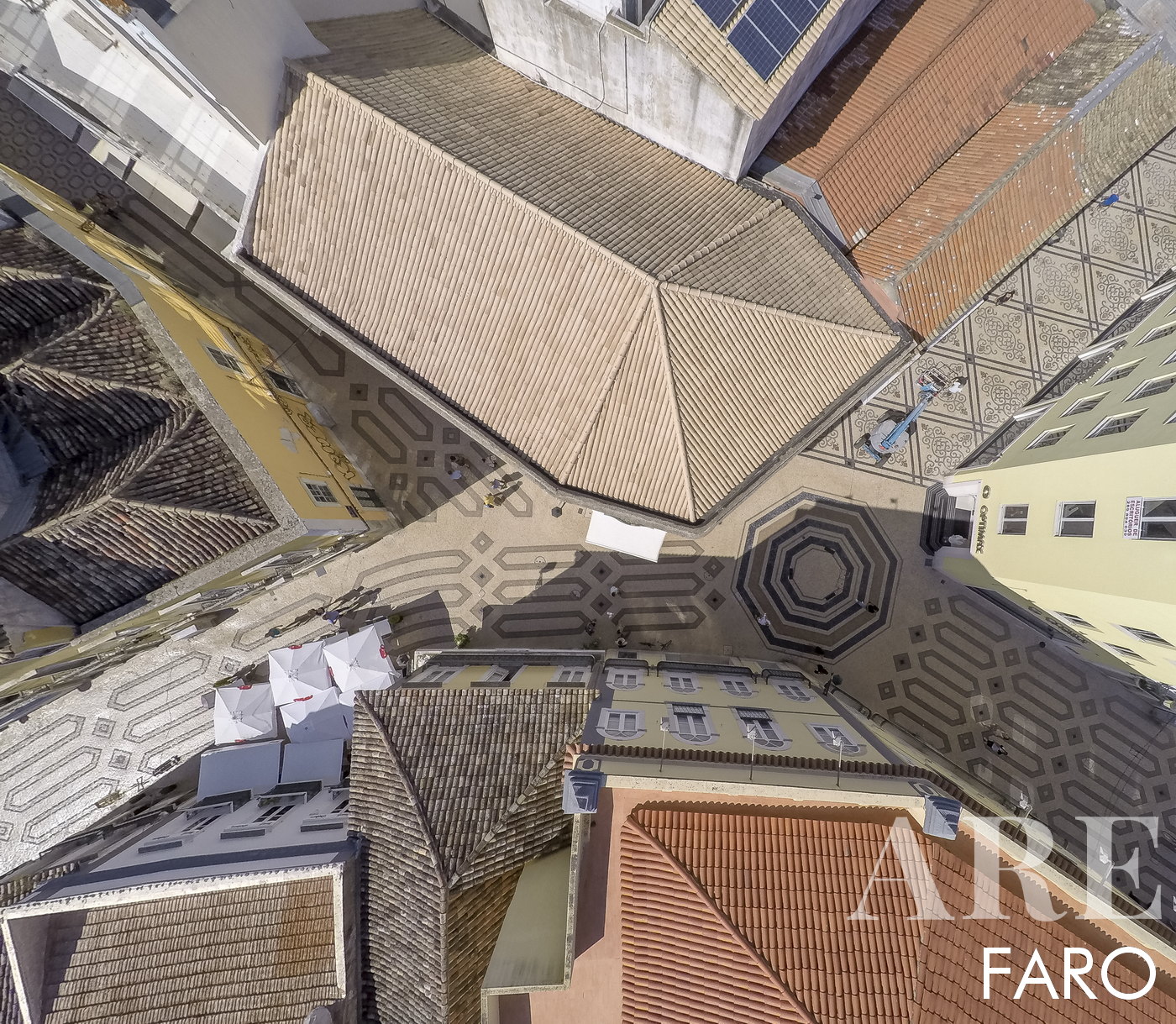
View of the traditional Portuguese pavement in the shopping street. An important point in the trade of the region Faro
Main attractions to visit in Faro
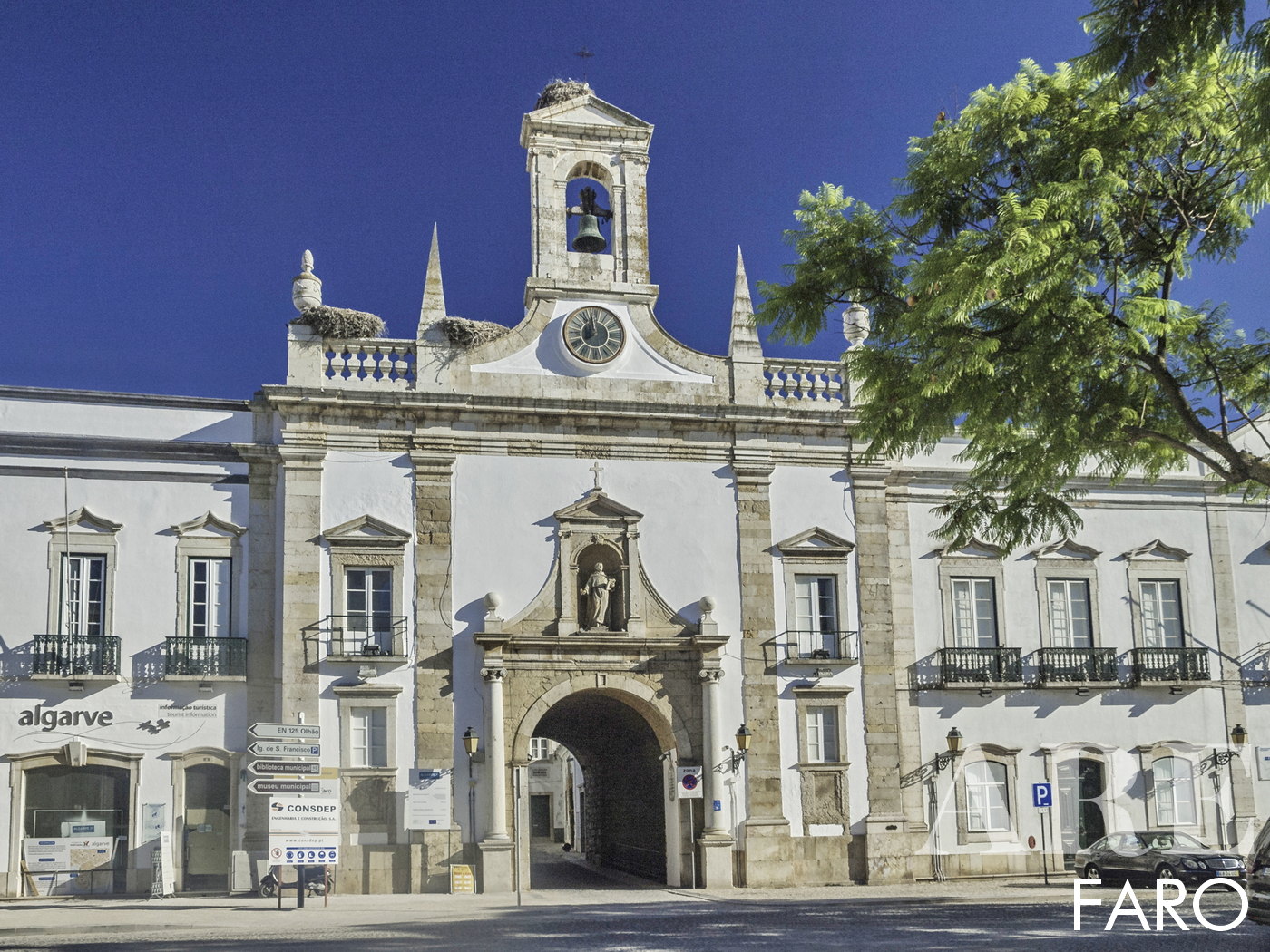
Arco da Vila in Faro, one of the doors to the interior of the Old Town of Faro, where we find the various entrances to the city walls, Arco da Vila, Porta Nova, Urban Fence, Arco do Repouso, and several other attractionsIn the northwest centre, we access Conselheiro Bivar Street, a street mainly occupied by restaurants and bars, some of them located on top of buildings, with terraces overlooking the Ria Formosa, the ocean, the surrounding city, and the airport on the horizon. The historical city area is located to the east, protected by walls, with terrace restaurants in a centuries-old protected environment. And to the south, the coastal area near the dock and the Ria Formosa.
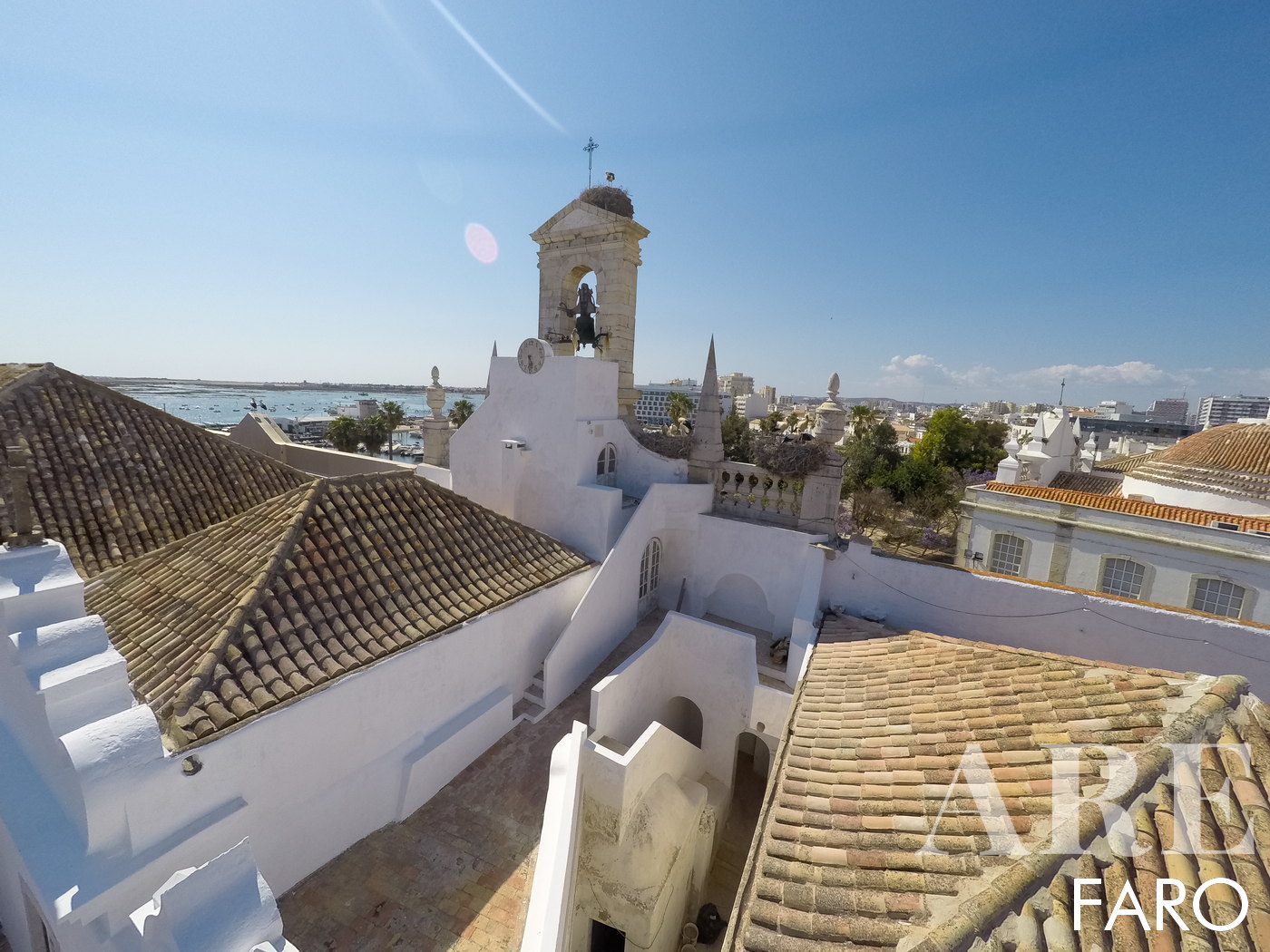
Aerial view of the charming, terracotta-tiled rooftops of Faro’s old town, showcasing the picturesque and historical urban landscape of this Algarvian gem.
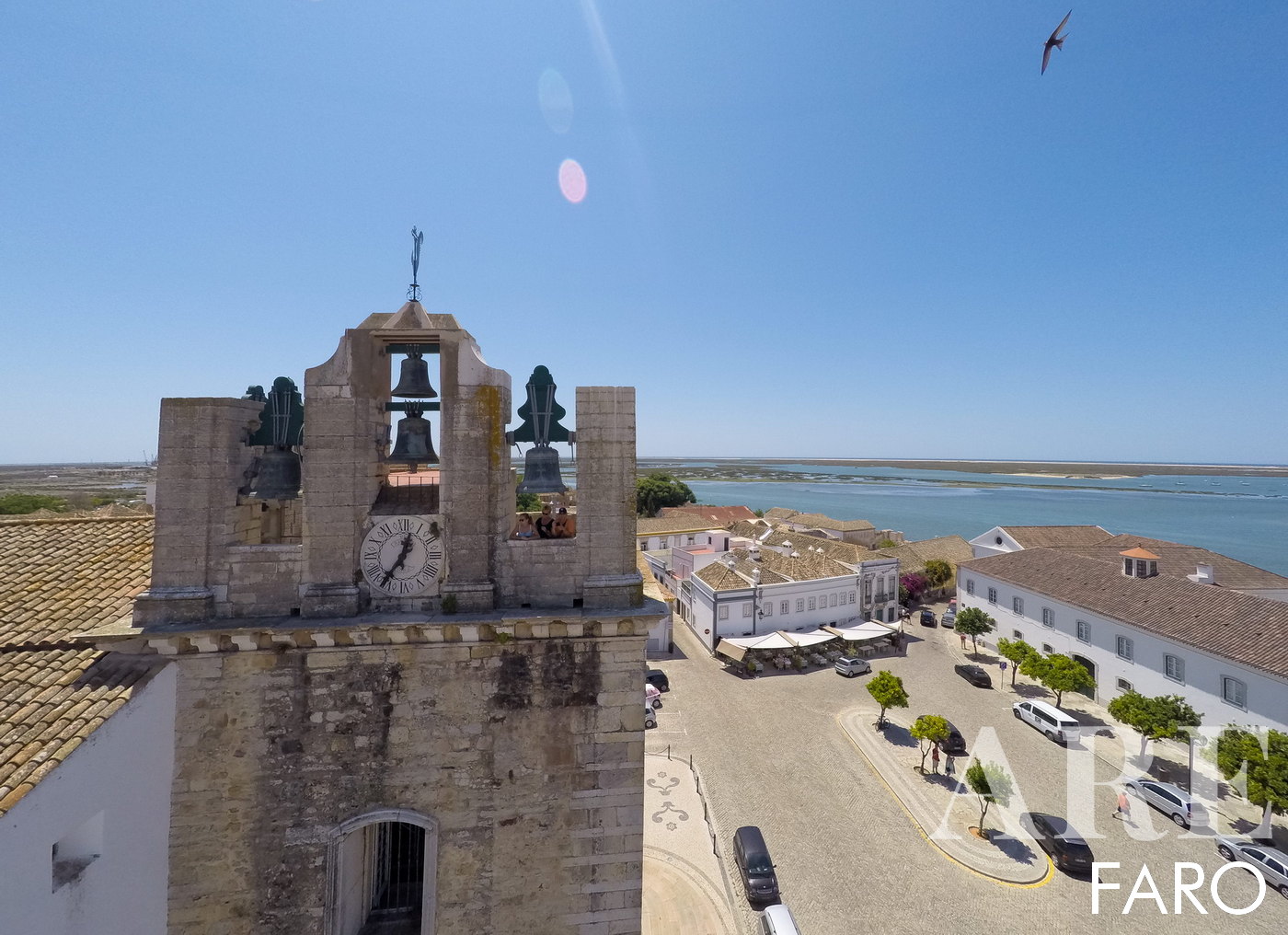
Church of Santa Maria, Faro Cathedral, located in the old city of Faro, one of the must-visit points. From the top of the Cathedral, we can observe fantastic panoramic views over the city;
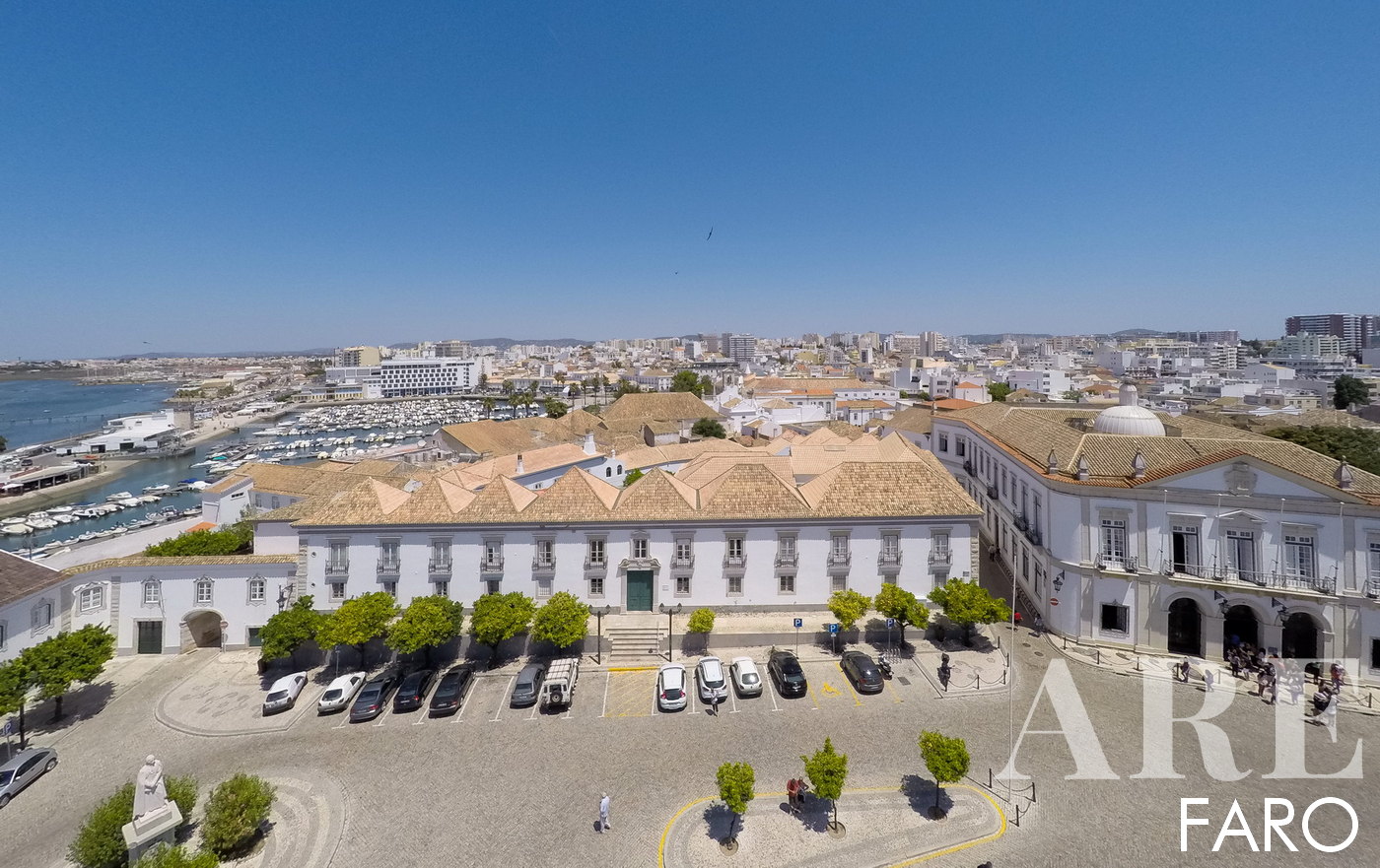
Largo da Sé – here we find the statue in homage to Bishop D. Francisco Gomes de Avelar. A notable character for the city, being responsible for founding the Seminary of Faro, the Infante D. Henrique Museum and built several monuments in the city. Bishop D. Francisco Gomes de Avelar built art schools for the inhabitants of the Algarve to learn a trade and be able to support their families. He had roads and bridges built, and taught cultivation processes. D. Francisco Gomes de Avelar was an intellectual man dedicated to transmitting education and good manners to the people.
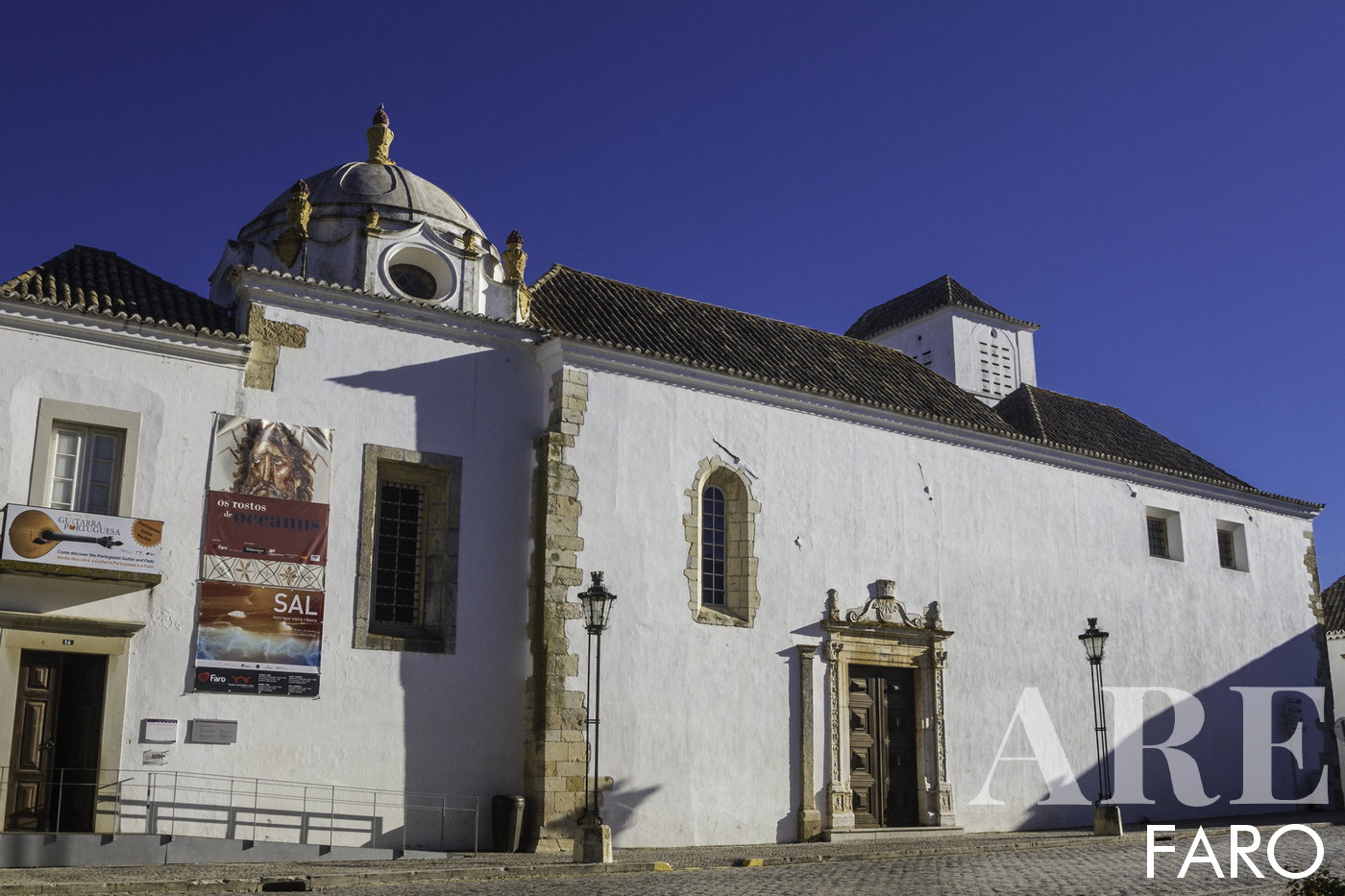
Faro Municipal Museum – also known as Archaeological Museum, it is an important cultural and historical centre in the city of Faro. The museum is located in a 16th century Renaissance building, which was once the old Convent of Nossa Senhora da Assunção. The museum offers a wide variety of exhibitions that cover the history and culture of the Algarve region, with artefacts from the Roman era to medieval and modern art, including sculptures, paintings and ceramics. Among the highlights of the museum is the extensive collection of Roman artefacts, which includes the remarkable Ossonoba Stele, a Roman landmark dedicated to Jupiter.
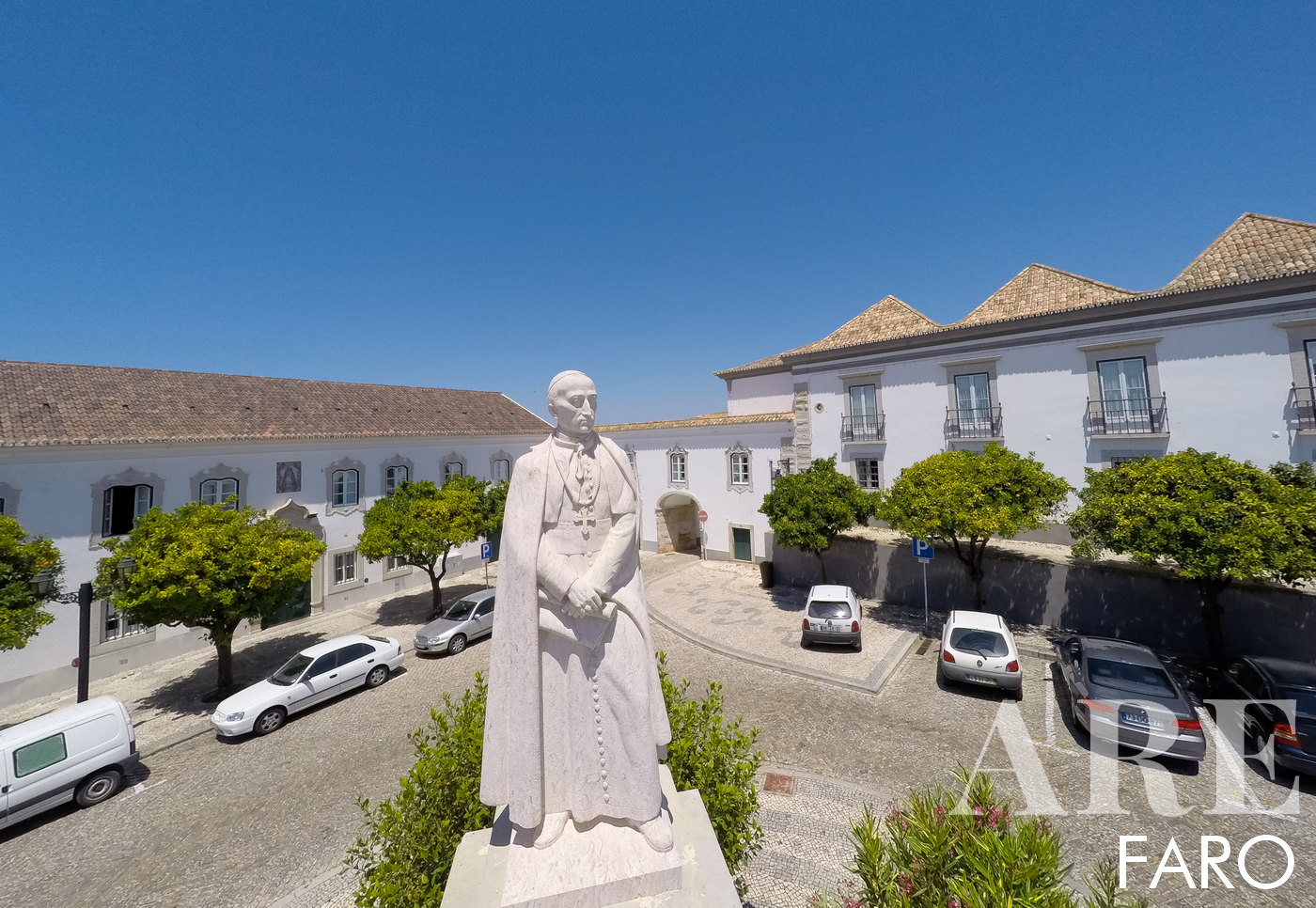
D. Francisco Gomes de Avelar was responsible for redesigning the city of Faro in the early 19TH century
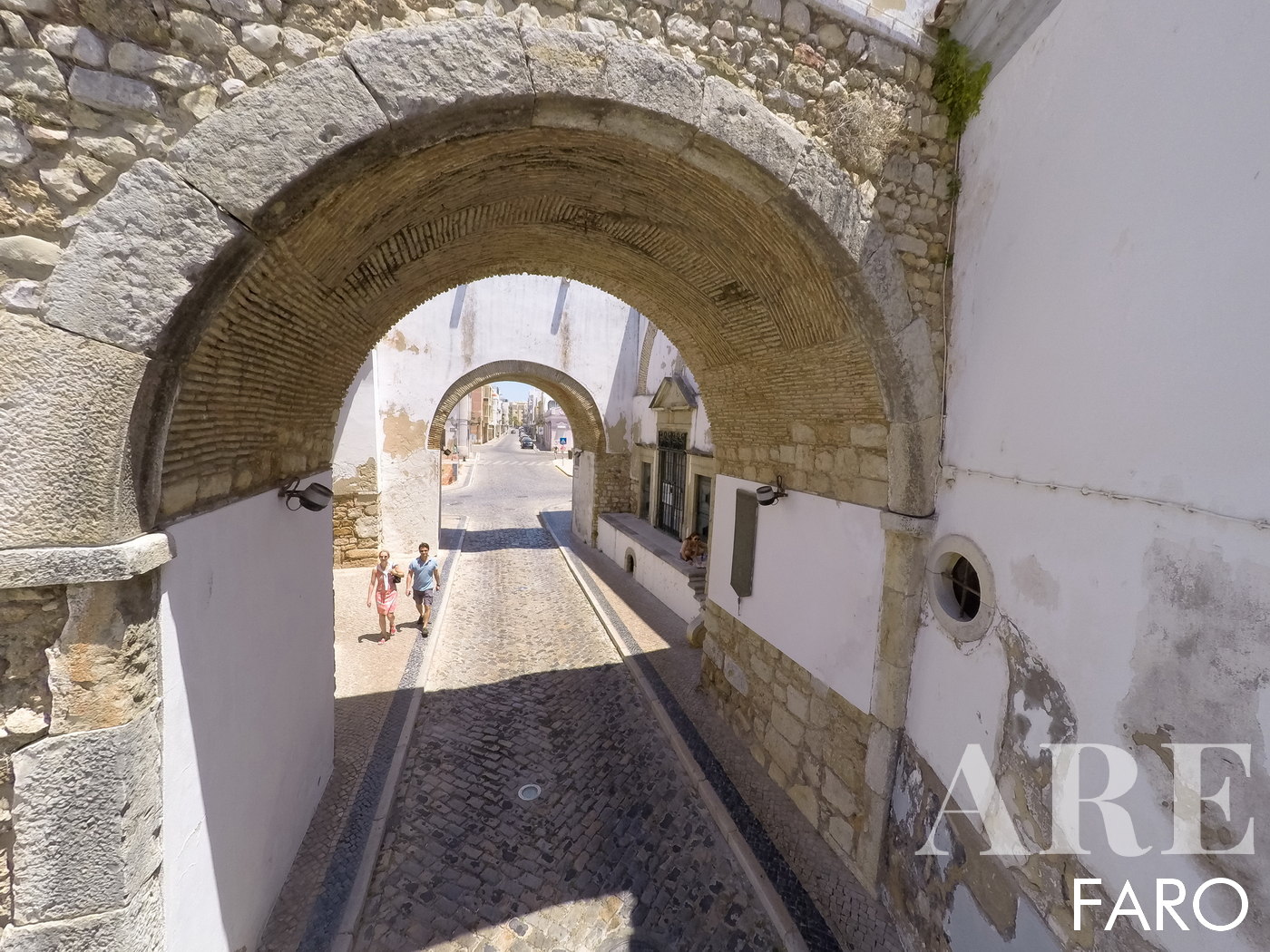
Arches of the old town of Faro. Here we can enter the city and walk through the old town. There are several restaurants and service areas
Main attractions to visit in Faro
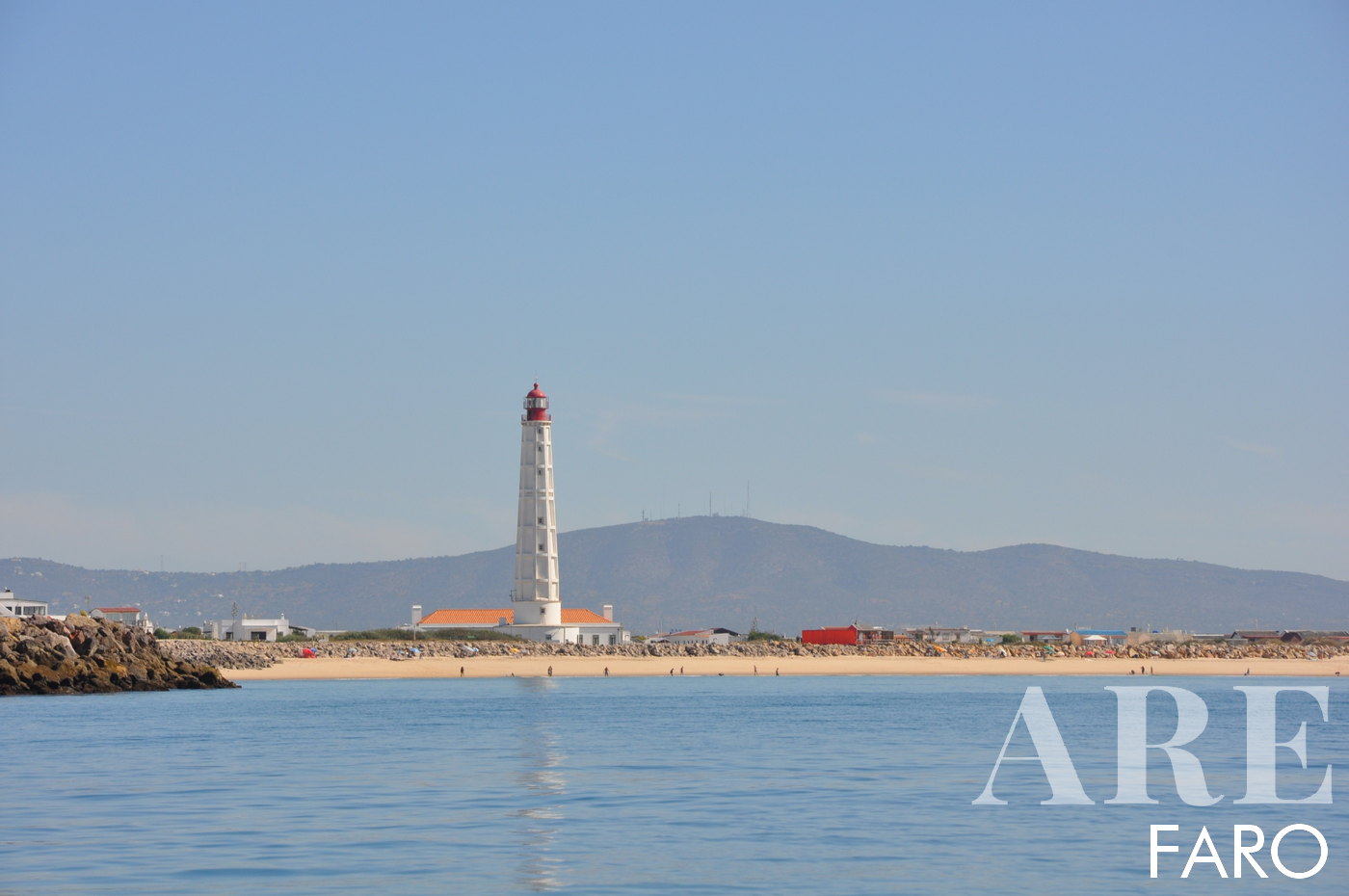
Ria Formosa Natural Park – is a lagoon system, a protected area that we can visit on a boat ride, exploring the channels, lagoons and the various islands of Armona, Culatra, Hangares, Farol and Deserta. Along the way, you will be able to observe seabirds, including flamingos, and other rare migratory species. On a visit to any island, you can have lunch with fresh fish and seafood at the local restaurants, and dive into the deserted beaches with peaceful landscapes. We recommend the experience of tasting local products, especially oysters and clams. If you stay until the end of the day, you will be able to watch the spectacular sunset that this natural lagoon has to offer. The Ria Formosa is a living painting, with the tides dictating the activities. When the tide is low, the shellfish pickers appear in the shallows, for clam harvesting, the fishermen take their places, the oyster farms are revealed on the surface, the colours transform, the water movement changes… Here we can visit
- Ilha Deserta beach – for those who like the beach, on the various islands of the natural park we find beaches of great beauty, with the Ilha Deserta beach being one of the most spectacular. On the Deserta island, there is the Estaminé restaurant, one of the best beach restaurants in the Algarve…
- Culatra Island – on the island of Culatra we find the local fishing population with a fishing port. In front of Culatra, in the Ria channel, there is a landscape of yachts that anchor and remain in the shelter of the channel, creating an idyllic landscape.
- Hangares – Hangares are a fishing village located west of the Culatra population.
- Armona Island – Located in the eastern part of Ria Formosa, the island’s beach has a transformation in front of the entrance to the bar, gaining more than 100 meters of beach with the low tide.
- Farol Island – Farol Island is the most modernized population of all the islands. Located at Cape Santa Maria, here we find the Lighthouse of Cape Santa Maria, a point of interest that can be visited, climbing to the top where we glimpse a fantastic panoramic view over the Atlantic Ocean, the local populations, the ria, Olhão, Faro and the Algarve mountains.
- Grelha Salinas – the Grelha Salinas are traditional salt pans that operate according to ancestral methods, adapted as a tourist attraction that aims to promote the long tradition in the production of salt in the Ria Formosa in the Algarve, dating back to Roman times.
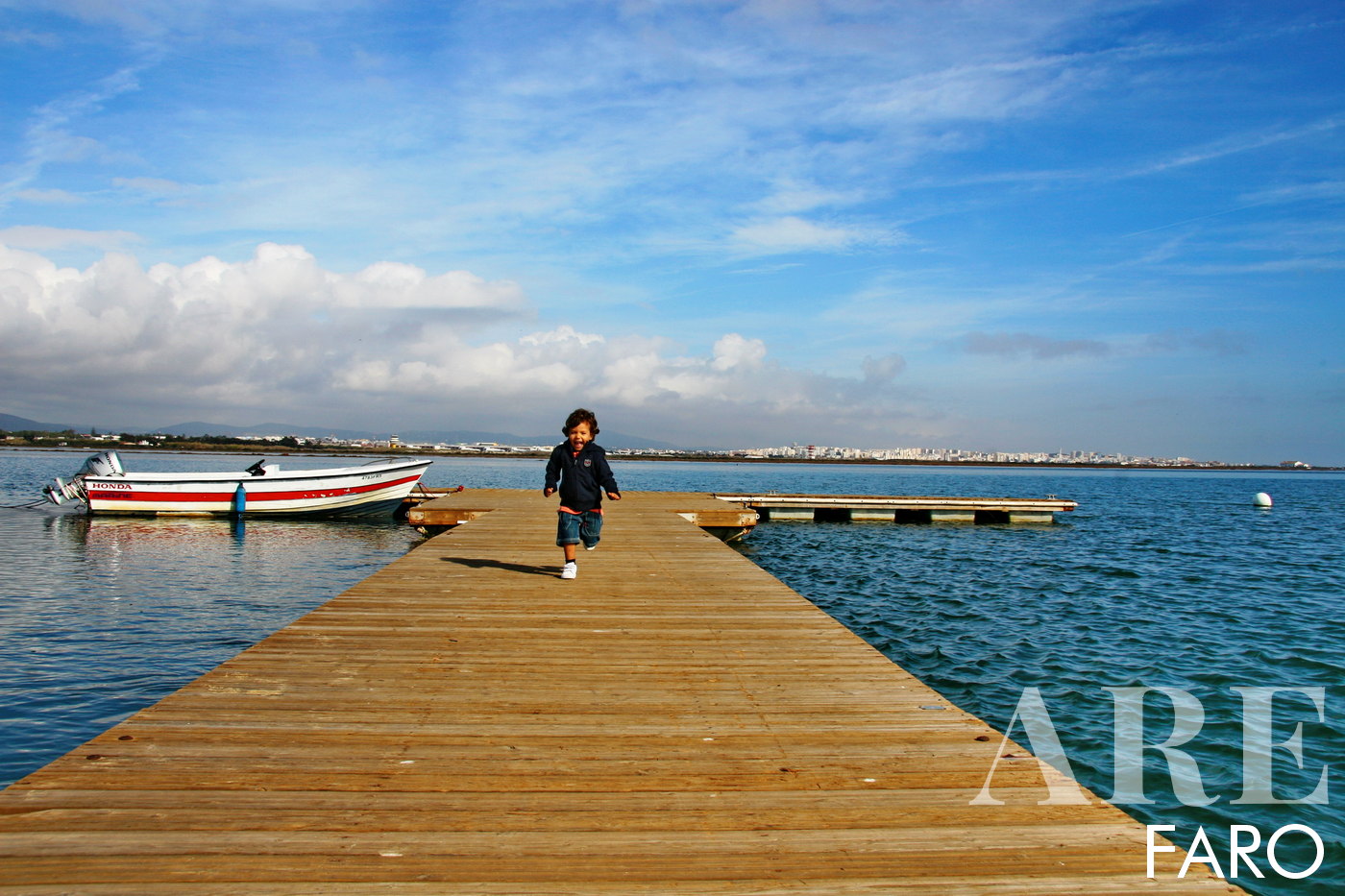
Faro beach – with a unique location, it is located at one end of the Ria Formosa. There is a local population on a narrow strip of land only 150 meters wide that separates the natural lagoon from the sea. Here we find several restaurants with views of the lagoon, restaurants with sea views, some literally with their feet in the sand. Faro beach is a unique combination of sea beach and natural reserve. At the end of Faro beach, there is a wooden boardwalk that takes us to the far end of Faro beach, a deserted beach known as Barrinha beach, often visited by locals for surfing.
Regional Museum of Algarve – a museum where we find permanent exhibitions about the historical life throughout the centuries of the local inhabitants of the Algarve region, with archaeological artifacts, historical documents and photographs. In the museum we can also visit a section dedicated to fishing and maritime industry in the Algarve
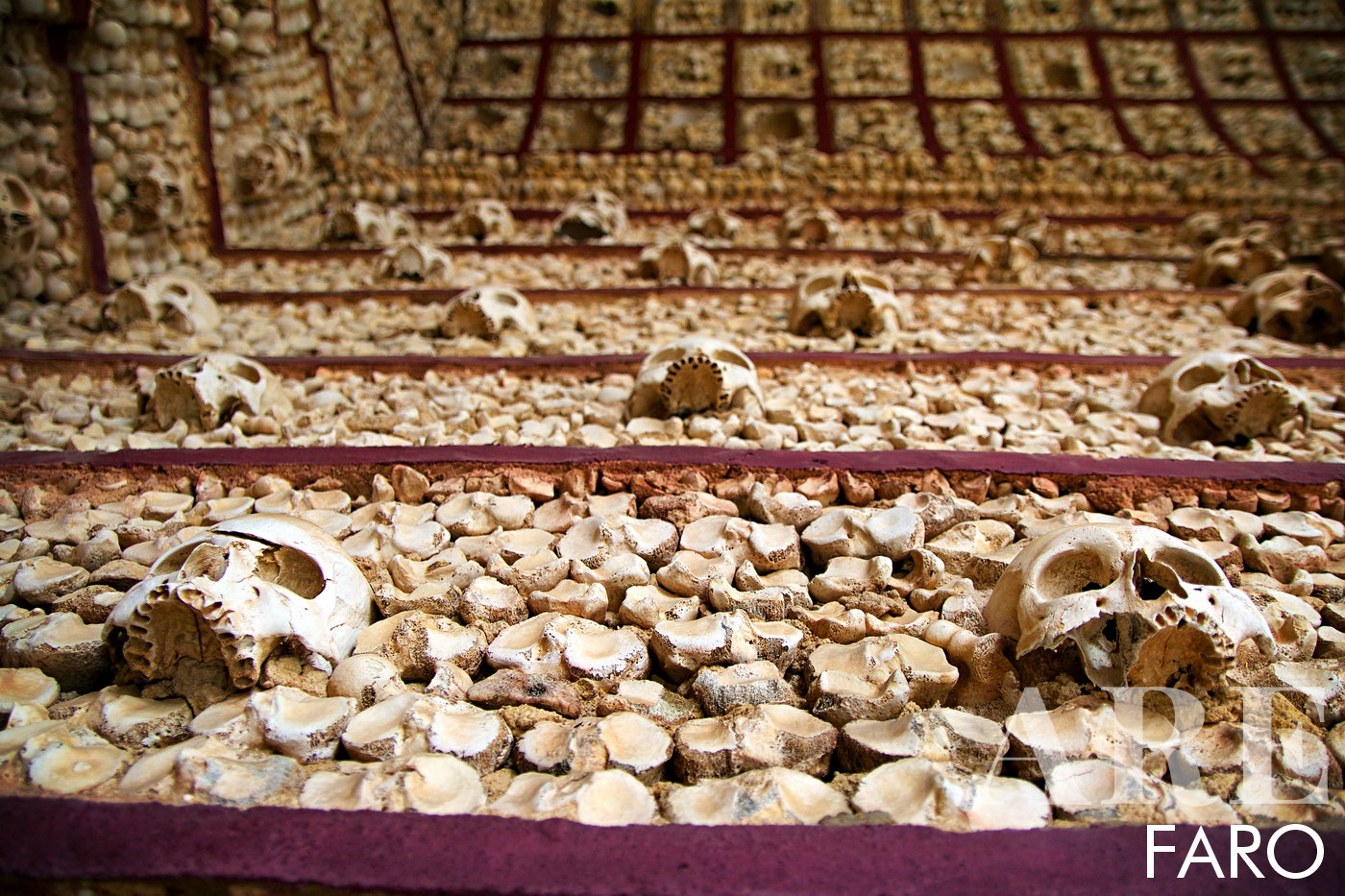
Chapel of Bones in Faro – is one of several bone chapels that exist in Portugal. The walls and ceiling are decorated with the bones and skulls of hundreds of monks. According to records, the purpose of this macabre decoration is to show the mortality and ephemerality of human life. When we enter, we can observe the bones arranged symmetrically and artistically, creating a strange and fascinating environment. Other bone chapels can be found throughout Europe, with the Chapel of Bones in Évora, Portugal being one of the most well-known. If you want to visit, the Chapel of Bones is located inside the Carmo Church in Faro, a beautiful baroque church.
Lethes Theater – is one of the oldest theaters in Portugal. It opened in 1599 as the College of Saint Francis Xavier and became a theater in 1845. The Lethes Theater has an impressive neoclassical façade and an intimate interior decorated with velvets, with a unique and appealing charm creating a cozy atmosphere, with its 19th century decorative details. The performance room has a capacity for approximately 300 people and hosts a variety of cultural events, including theater plays, classical music concerts, poetry recitals and lectures. Theater of Figures – a cultural center 2km northwest of downtown Faro Algarve, which serves as the city’s main theater and concert hall, with a capacity for 600 seats, excellent acoustics where regular theater, dance and concerts, conferences, and other cultural events take place. In addition to the regular programming of events, the Theater of Figures also organizes music and dance festivals, film screenings, and art and culture workshops. Admiral Ramalho Ortigão Maritime Museum – The Admiral Ramalho Ortigão Maritime Museum in Faro is a captivating tribute to Portugal’s seafaring heritage. Exhibiting naval artifacts and insightful historical narratives, it offers a deep dive into the country’s rich maritime past. Algarve Living Science Center (Centro Ciência Viva do Algarve) – a major hub for science education in Faro, Portugal. The center offers a range of interactive exhibits and activities designed to make learning about science, technology, and the natural world fun and engaging for all ages.
Other highly sought-after places of interest in Faro!
Forum Algarve Shopping – a shopping center located 2km northwest of downtown Faro, where we find cinemas, Jumbo hypermarket, Bertrand bookstore, Apple store, Fnac, Zara, Massimo Dutty, food court, Lusiadas Forum Algarve Private Clinic, University of Algarve, Penha Campus – Faro International Airport – is the second busiest airport in Portugal. It has an air connection in approximately 2h30 hours with the main European cities. Faro International Airport is located in front of the city of Faro, surrounded by Ria Formosa. Access to the airport is made by the parish of Montenegro, at a distance of six kilometers from the center of the city of Faro.
Health Institutions
- Private Hospital of Algarve – Gambelas – HPA Health Group
- Lusiadas Forum Algarve Clinic
Charming Hotels, 5 and 4 stars
3HB Faro Hotel – The 3HB Faro Hotel, Faro’s latest 5-star establishment, sits in the city’s heart, winning guests over with its impressive offerings. The Hábito rooftop restaurant serves tantalizing cuisine, complemented by a rooftop infinity pool offering city, Ria Formosa, and Atlantic ocean vistas. The luxurious rooms and suites feature private jacuzzis, and a rejuvenating spa completes this premier hospitality experience.
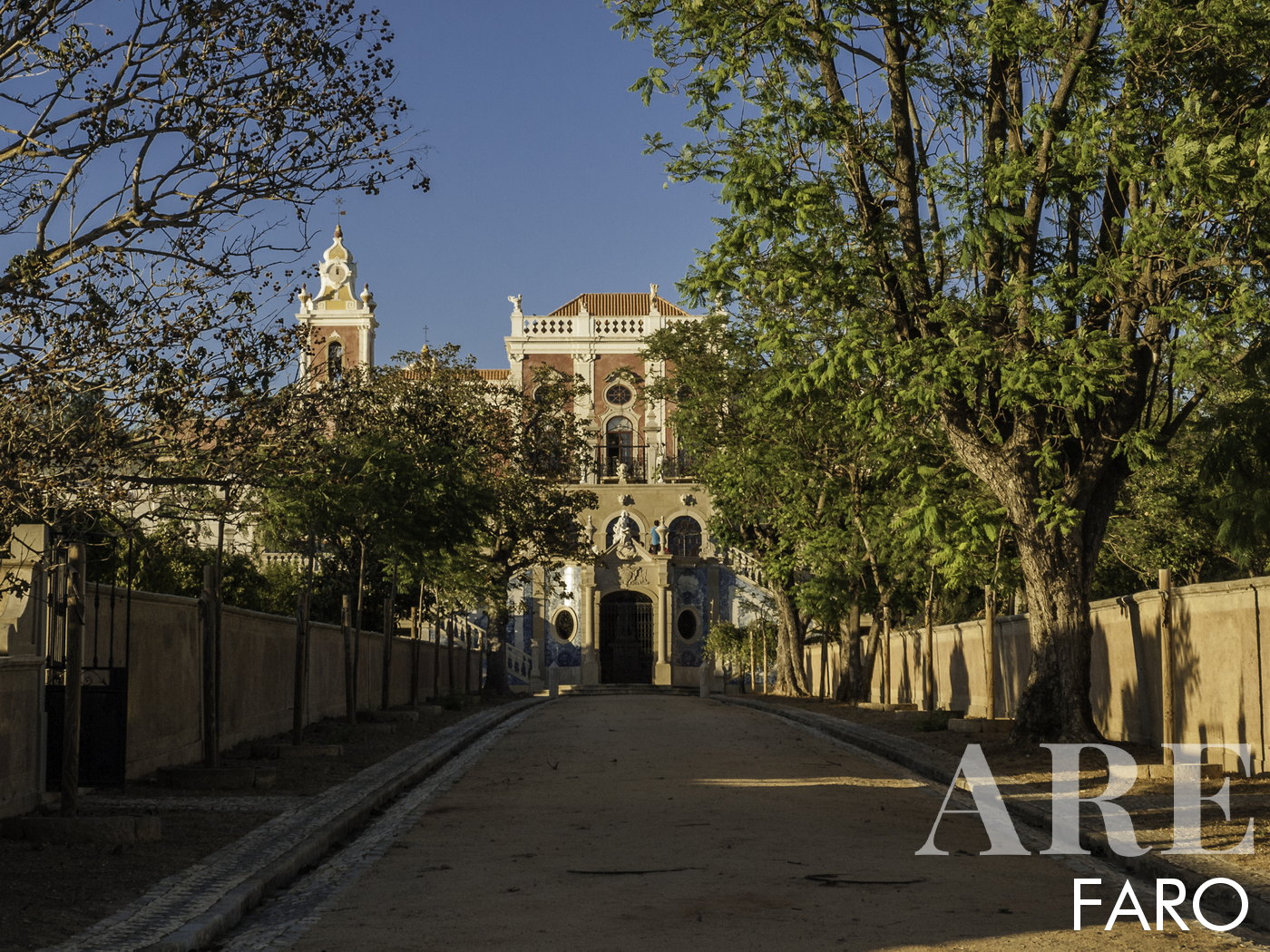
Palace of Estoi – is a Charming Inn, an old rococo-style palace located on the outskirts of Faro, restored and adapted to function as a charming inn. The Palace of Estoi was classified in 1977 as a Property of Public Interest. The blue and white tile decoration is one of the great attractions, in addition to the copy of the Three Graces, a work by the Italian sculptor Canova. The palace also has a large pavilion adorned with colorful stained glass windows and decorative fountains, in which nymphs seem to emerge from the waters, complemented with tile niches, creating an atmosphere of charm and mystery. Estoi is an agricultural area of Faro. Today Pousada Palace of Estoi is one of the best known tourist spots in Faro, receiving visitors from all over the world in search of its beauties and its tranquility.
Eva Senses Hotel – 4 star hotel with rooftop pool located in the center of Faro Faro Hotel – 4 star hotel with rooftop restaurant located in the center of Faro
Brief history of the city of Faro
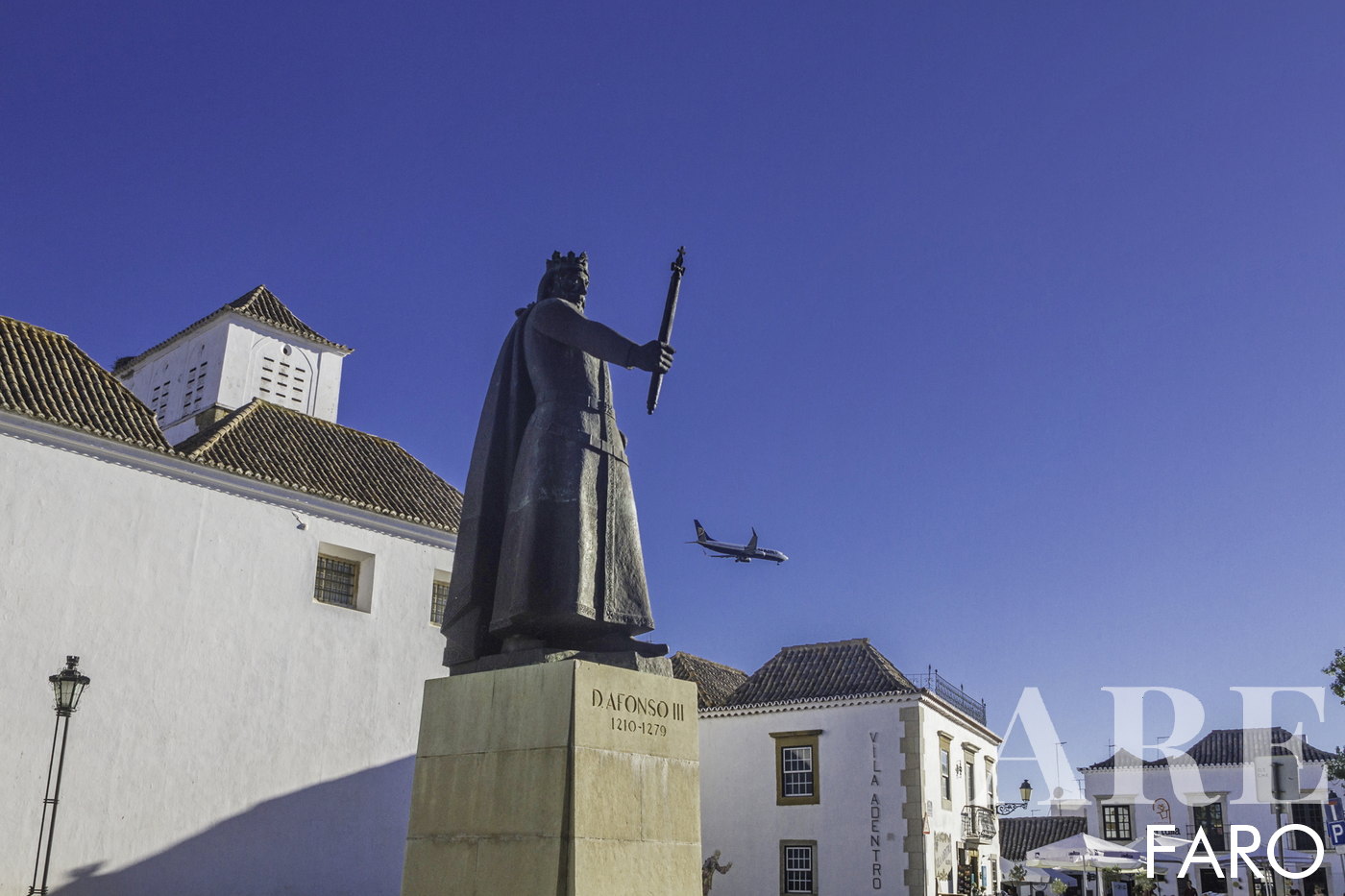
D. AFONSO III, conqueror of the city from the Moors in 1249
Faro (Ossonoba) is a Roman city from the 8th century Before the Modern Era. It is the capital of the Algarve since 1956. The old name of the city was Ossonoba, baptized by the Romans. The city of Ossonoba was conquered by D. Afonso III in 1249, having been baptized “Santa Maria de Faaron”, which originated the current name of the city, Faro. With 47,000 inhabitants, Faro holds most of the administrative services of the Algarve region.
Urbanism of Faro
Faro is a multifaceted city, dominated by a variety of administrative services, educational institutions, a district hospital, and a lively shopping street that extends into a bar and entertainment area. This coastal metropolis, separated from the Ria Formosa by a railway, a seaport and an airport, expands both inland, extending to the village of Estoi, and to the mountains, reaching the village of Santa Bárbara de Nexe. The peripheral areas of Faro are popularly known as the “old gardens”, characterized by the presence of vast orange groves and vegetable gardens that supply the region’s large hypermarkets. Faro Beach, one of the city’s main attractions, is located about 9 km away, situated on a peninsula known as Faro Island. Access to the peninsula is provided by a bridge that accommodates road and pedestrian traffic, with a wooden walkway. In addition to being possible to reach the beach through the extension of the beaches of Quinta do Lago and Quarteira.
Borders of the city and municipality of Faro
The southern border of Faro is defined by the Atlantic Ocean coast. To the east, Faro borders the municipality of Olhão, known for its cubist architecture, and for the markets by the sea. To the west, Faro is bounded by the municipality of Loulé, a city famous for its historical market and castle. The N125 road is one of the main connections between the two cities. To the north, Faro borders the municipality of São Brás de Alportel, a city in the Algarve interior known for cork production.
Distances to the city center of Faro
- Faro International Airport – 6.5 km
- Faro Beach- 9 km
- Portimão, Portugal – 60 km
- Porto, Portugal – 556 km
- Lisbon, Portugal – 277 km
- Huelva, Spain – 112 km
- Seville, Spain – 201 km

